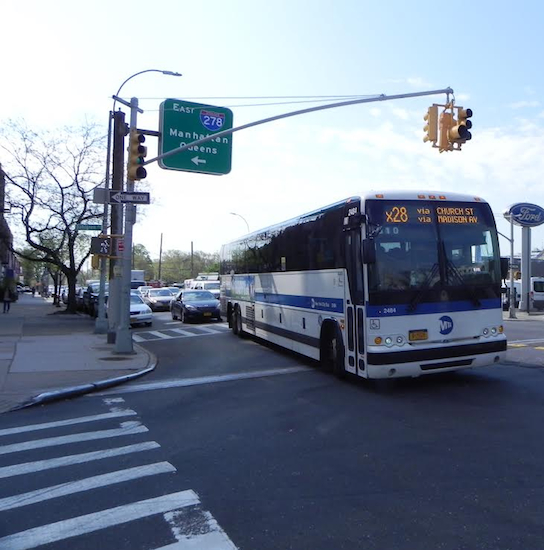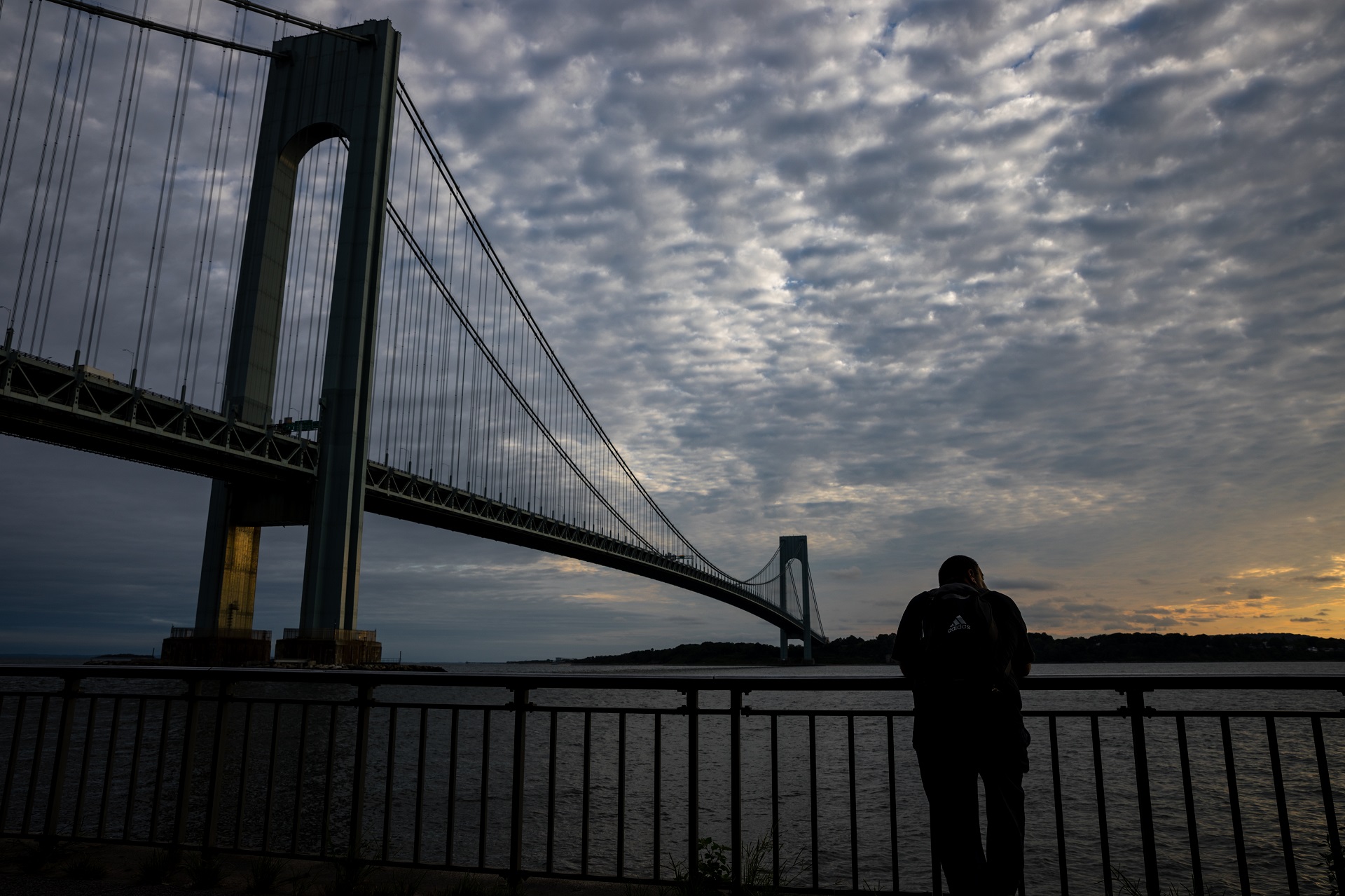Stringer audit shows express buses habitually late

Express buses in Brooklyn are habitually late, according to an audit conducted by Comptroller Scott Stringer. The X28 bus runs along 86th Street in Bay Ridge for part of its route. Eagle photo by Paula Katinas
If you ride the X27 or X28 express buses from Brooklyn to Manhattan and feel like you wait a long time for your bus to arrive, City Comptroller Scott Stringer says you’re right.
An audit conducted by the comptroller’s office of express bus service operated the Metropolitan Transportation Authority (MTA) revealed that the buses missed their scheduled departure times more than 30 percent of the time.
In Brooklyn, the BM1, X27 and X28 bus routes had late departure times an average of 33.7 percent of the time, according to Stringer’s report. The audit also uncovered the fact that commuters waited anywhere from 6 to 28 minutes after a scheduled time for the next available bus.
